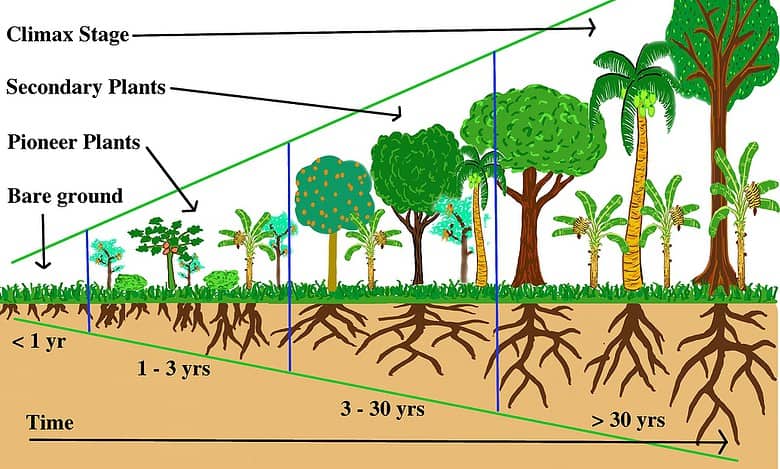
I am always happy when I see a ‘Happen Film’. Beautiful portraits of beautiful people. This is not a close story but it can always be inspiring. This pioneer family is involved in Syntropic farming.
Syntropic farming is not really a method, but you could rather speak of principles. The pioneer is Ernst Götsch’s a Swiss scientist and researcher who was mainly concerned with genetics has developed. Pruning is the basis for change. Pruning stimulates a system’s metabolism. Compare it to cutting your hair. Let’s not look for raw materials, let’s make them. Pruning increases the functioning of the root system by altering the mycorrhizae. It stimulates the plant to produce gibberellic acid. Bacteria and fungi will thrive, which leads to more nutrients. There is also more photosynthesis in pruned plants. This increases the absorption of carbon and sunlight. He leaves the prunings in order to nourish the soil permanently.
Gibberellic acid is a plant hormone that promotes the growth and elongation of plant cells. It also affects the ratio of male to female flowers on a plant, promotes fruit set, produces larger leaves and can cause some biennials to flower in the first year. It stimulates the germination of the seeds. Gibberellic acid is sometimes used in laboratories and greenhouse horticulture to help germinate seeds that would otherwise not grow.
The basic principle s a little more highlighted
Keep the ground covered by growing large amounts of biomass, which is pruned or mowed regularly and left. Syntropical agriculture tries to maximize photosynthesis by planting rows of trees from north to south. This is the primary design strategy, as opposed to water management by using contour planting only. Moreover, this is achieved by an extreme high planting density; 20-40 plants / seeds / cutting per square meter . These plants are arranged in space based on the principle of Stratification, which refers to where a plant grows in its optimal habitat.
The four typical stratas are emergent, high, medium and low, and usually refer to the light requirement of the species, but also to species shape / habit and leaf structure.
Natural succession is how these plants are arranged over time, from placental stage to secondary stage and finally to climax, the stages of succession through which a forest matures. The whole system must be constantly filled with plants of different layers, even if the system changes through a managed sequence. Synchronization refers to the removal of plant biomass, through harvesting and pruning, to obtain a yield, to create space for the next succession of species and to encourage new growth through the release of various rooting hormones that occur after pruning.
Because everything is planted close together, this is more labor-intensive than a traditional food forest. But there are indeed many similarities.